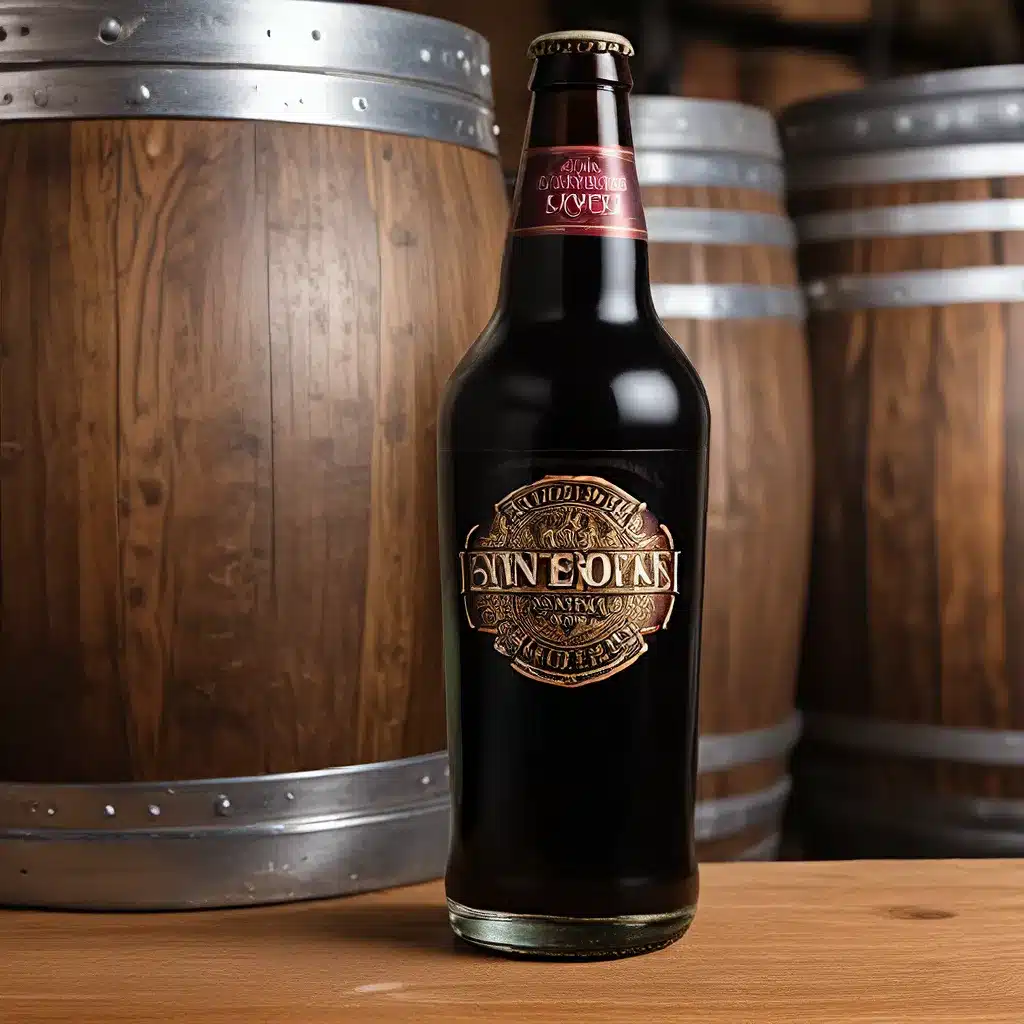
Diving into the Dark Depths of Imperial Stouts
Picture this: You step into a cozy pub, the air thick with the alluring aroma of roasted malt and caramelized sugars. You scan the taps, your eyes immediately drawn to the inky, opulent pour of an imperial stout. Intrigued, you order a pint and take your first sip, letting the velvety, complex flavors unfold on your tongue. Welcome to the captivating world of imperial stouts, a style that has captured the hearts and palates of beer enthusiasts worldwide.
As an avid explorer of the craft beer landscape, I’ve been fascinated by the mysterious allure of imperial stouts for years. These bold, high-alcohol brews are the stuff of legend, with a rich history that spans continents and centuries. From their humble origins in 18th-century England to their modern-day resurgence as a beloved style, imperial stouts have carved out a unique niche in the beer world.
Unveiling the Origins of Imperial Stouts
To truly unlock the secrets of imperial stouts, we must delve into their fascinating origins. The roots of this style can be traced back to the 1700s, when British brewers were tasked with crafting a stout that could withstand the long, treacherous journey to the imperial court of Russia. These robust, high-gravity stouts were designed to survive the voyage and impress the Russian aristocracy with their bold flavors and formidable alcohol content.
The Up & Under Pub takes great pride in its impressive selection of imperial stouts, and I’ve had the privilege of sampling many of these iconic brews within the cozy confines of this establishment. As I sip on a glass of Founders Kentucky Breakfast Stout, I’m reminded of the rich tapestry of history that has woven its way into the DNA of these remarkable beers.
Decoding the Complexity of Imperial Stouts
What sets imperial stouts apart from their lighter-bodied cousins is their sheer complexity. These beers are like a symphony of flavors, with each sip revealing a harmonious blend of roasted malts, dark fruits, and sometimes even hints of chocolate or coffee. The secret to their depth lies in the meticulous brewing process, which often involves the use of specialty grains, extended boil times, and careful fermentation techniques.
One of the most fascinating aspects of imperial stouts is their ability to evolve and transform over time. As these beers age, their flavors can become even more nuanced and layered, with notes of oak, vanilla, and even whiskey emerging as the beer interacts with the barrel or bottle. It’s like watching a work of art slowly unfold before your eyes, each sip revealing a new layer of complexity.
Uncovering the Craft Behind Imperial Stouts
Behind the scenes of these captivating imperial stouts, there’s a dedicated community of brewers and enthusiasts who are constantly pushing the boundaries of the style. From experimenting with innovative ingredient combinations to perfecting the aging process, these passionate individuals are constantly unlocking new secrets and pushing the envelope of what’s possible in the world of imperial stouts.
Take, for example, the team at Barrel-Aged Stout Brewing. These artisans have mastered the art of barrel-aging, infusing their imperial stouts with the bold flavors of whiskey, bourbon, and even rum. The result is a truly transcendent drinking experience, where the complexity of the stout blends seamlessly with the nuanced wood and spirit notes.
Exploring the Diversity of Imperial Stouts
As I delve deeper into the world of imperial stouts, I’m continually amazed by the sheer diversity of the style. From the rich, chocolate-y decadence of a Russian imperial stout to the bold, hop-forward take of an American imperial stout, each iteration offers a unique and captivating experience.
Take a look at this comparison table, which highlights some of the key differences between these two distinct imperial stout subsets:
| Characteristic | Russian Imperial Stout | American Imperial Stout |
|---|---|---|
| Origin | 18th-century England | 20th-century United States |
| Alcohol Content | Usually 8-12% ABV | Usually 8-12% ABV |
| Bitterness | Moderate to high | High to very high |
| Hop Aroma and Flavor | Subdued | Prominent |
| Malt Characteristics | Roasted, chocolatey, coffee-like | Roasted, chocolatey, coffee-like |
| Mouthfeel | Full-bodied, creamy | Full-bodied, sometimes chewy |
| Examples | Baltika #6, Rasputin, Storm King | Founders Imperial Stout, Stone Imperial Stout |
As you can see, while both styles share a deep, inky appearance and a robust malt backbone, the American imperial stout typically showcases a more assertive hop presence, while the Russian imperial stout leans more heavily into the rich, roasted malt flavors. It’s a testament to the versatility and creativity of the imperial stout style.
Unleashing the Magic of Imperial Stouts
As I savor the last sip of my Founders Kentucky Breakfast Stout, I can’t help but feel a sense of awe and appreciation for the intricate world of imperial stouts. These beers are not merely a beverage – they’re a work of art, a testament to the skill and passion of the brewers who craft them.
Whether you’re a seasoned imperial stout enthusiast or a newcomer to the style, I encourage you to embark on your own journey of discovery. Explore the diverse range of offerings, from the bold and hoppy to the smooth and velvety. Immerse yourself in the rich history and craftsmanship that goes into each and every pour. And most importantly, don’t be afraid to let the magic of these imperial stouts unfold before you, one sip at a time.
So, the next time you find yourself in The Up & Under Pub, scanning the taps for that irresistible inky pour, dive in and unlock the secrets of the imperial stout. I promise, it’ll be a journey you’ll never forget.

